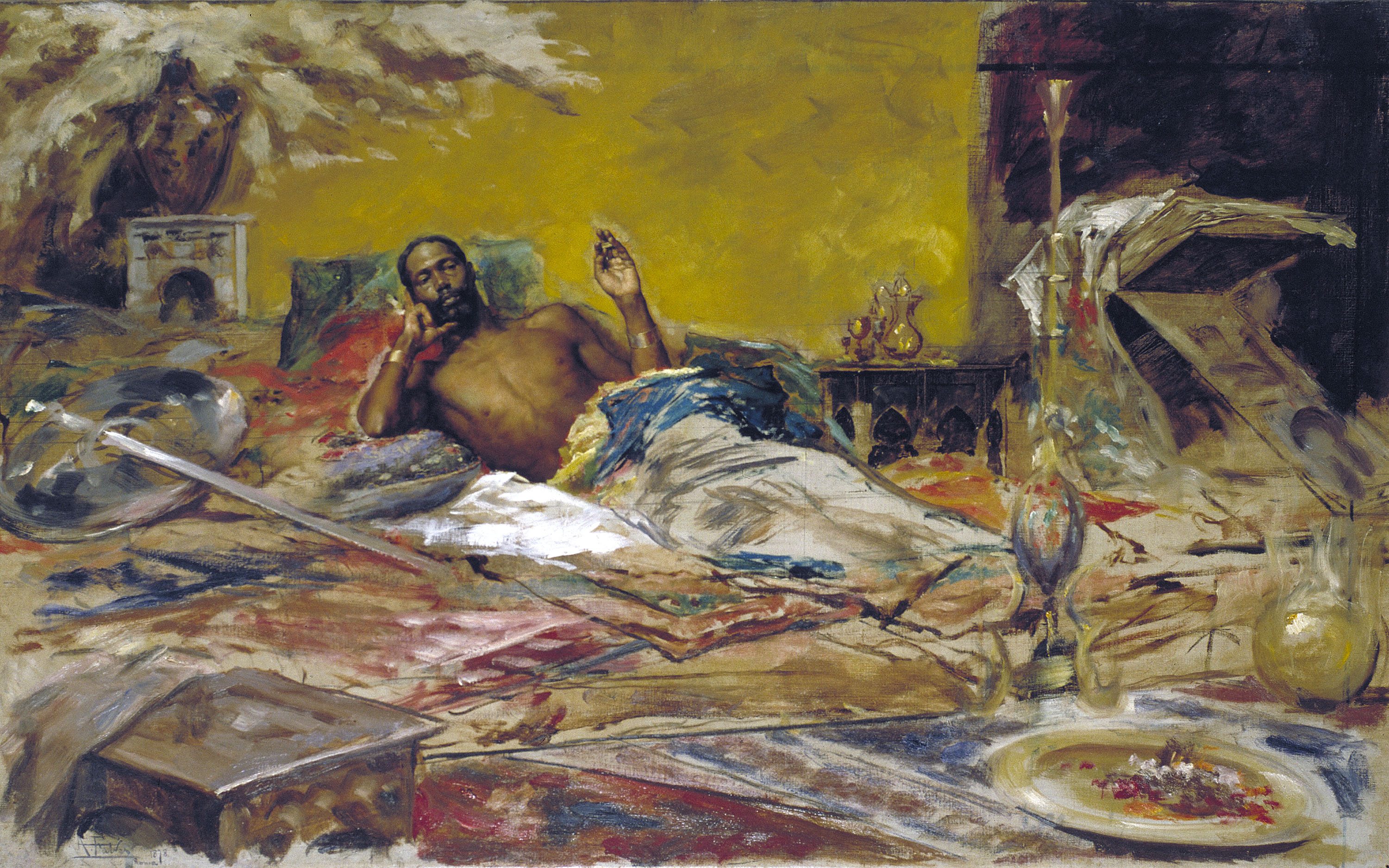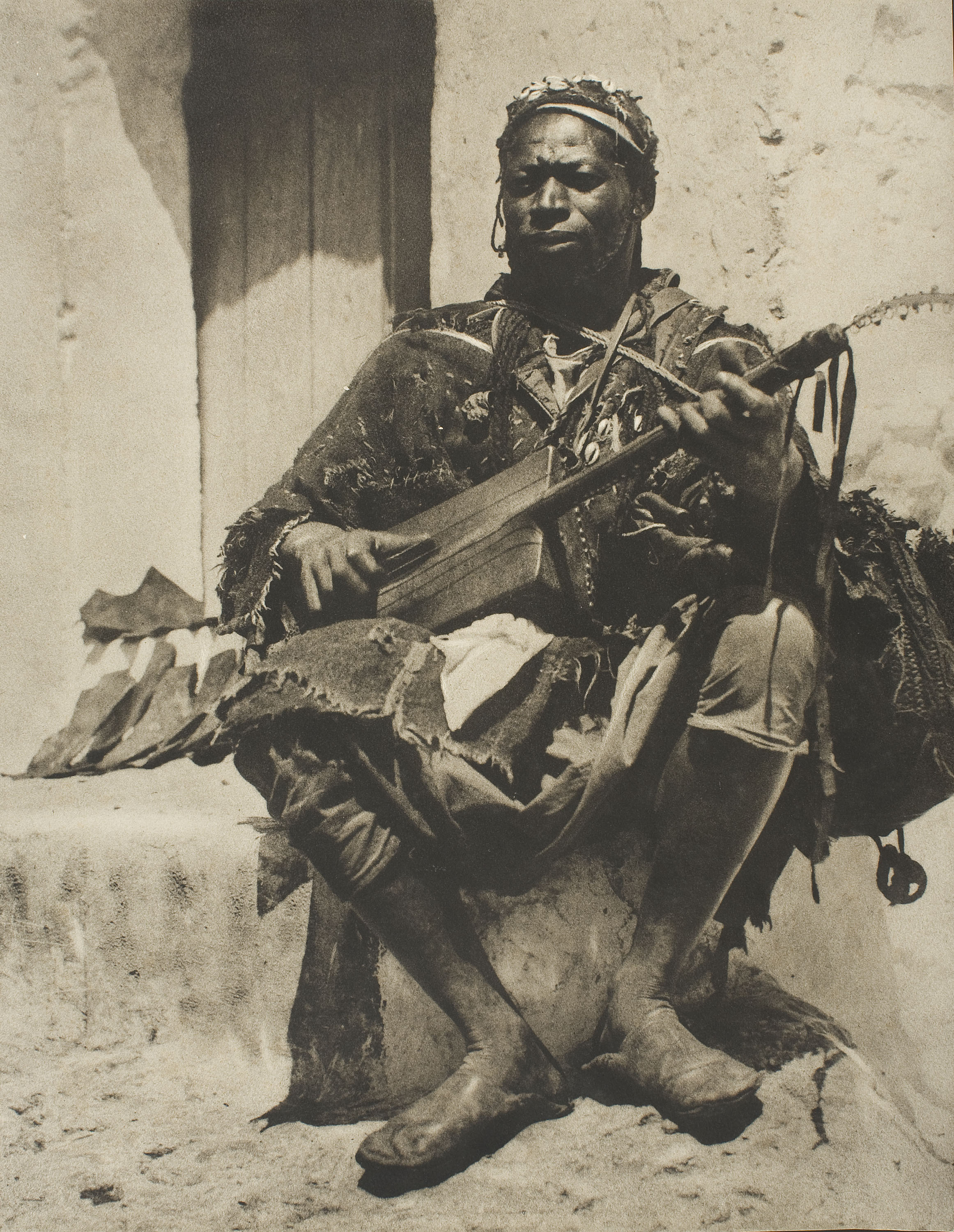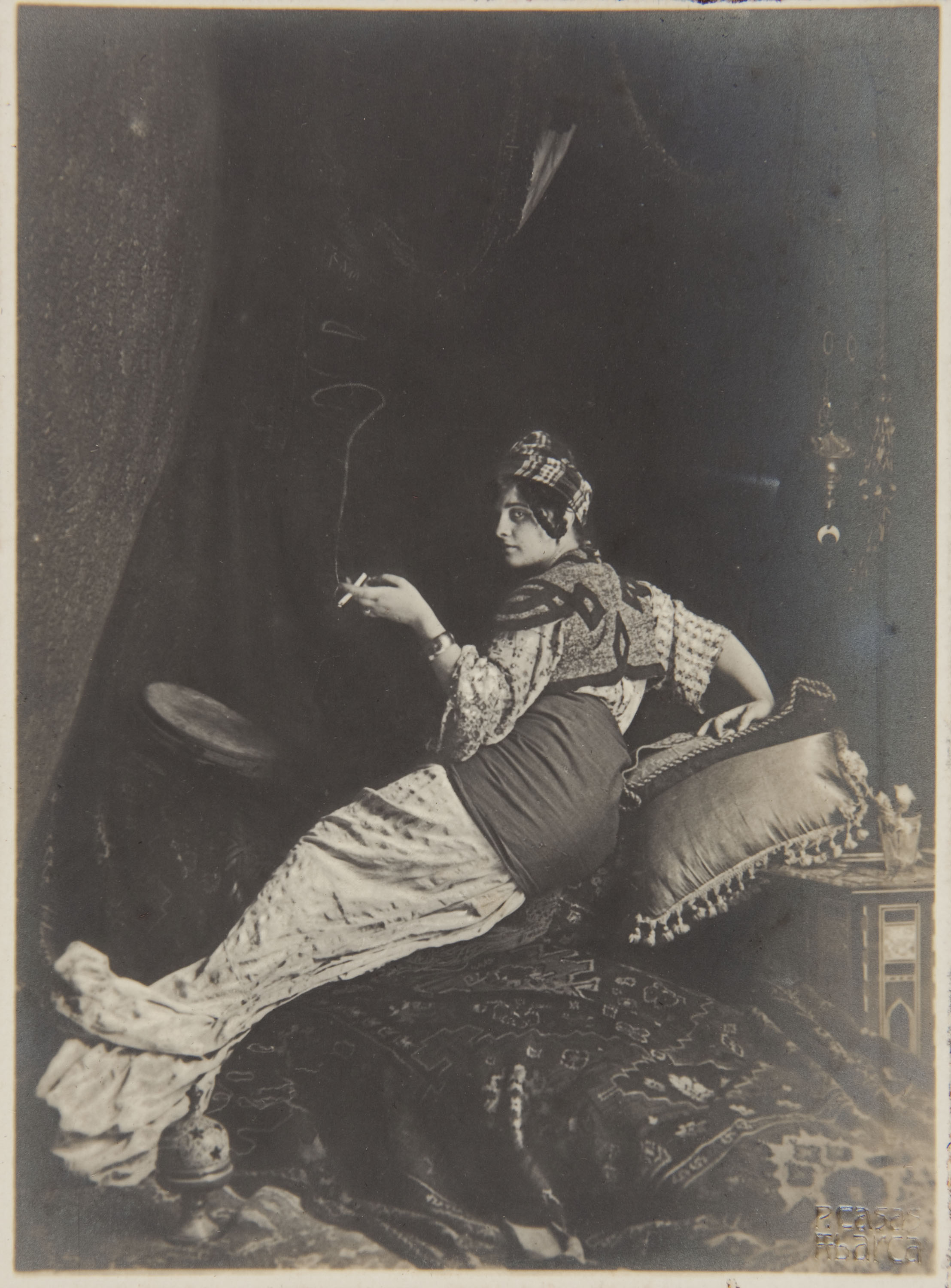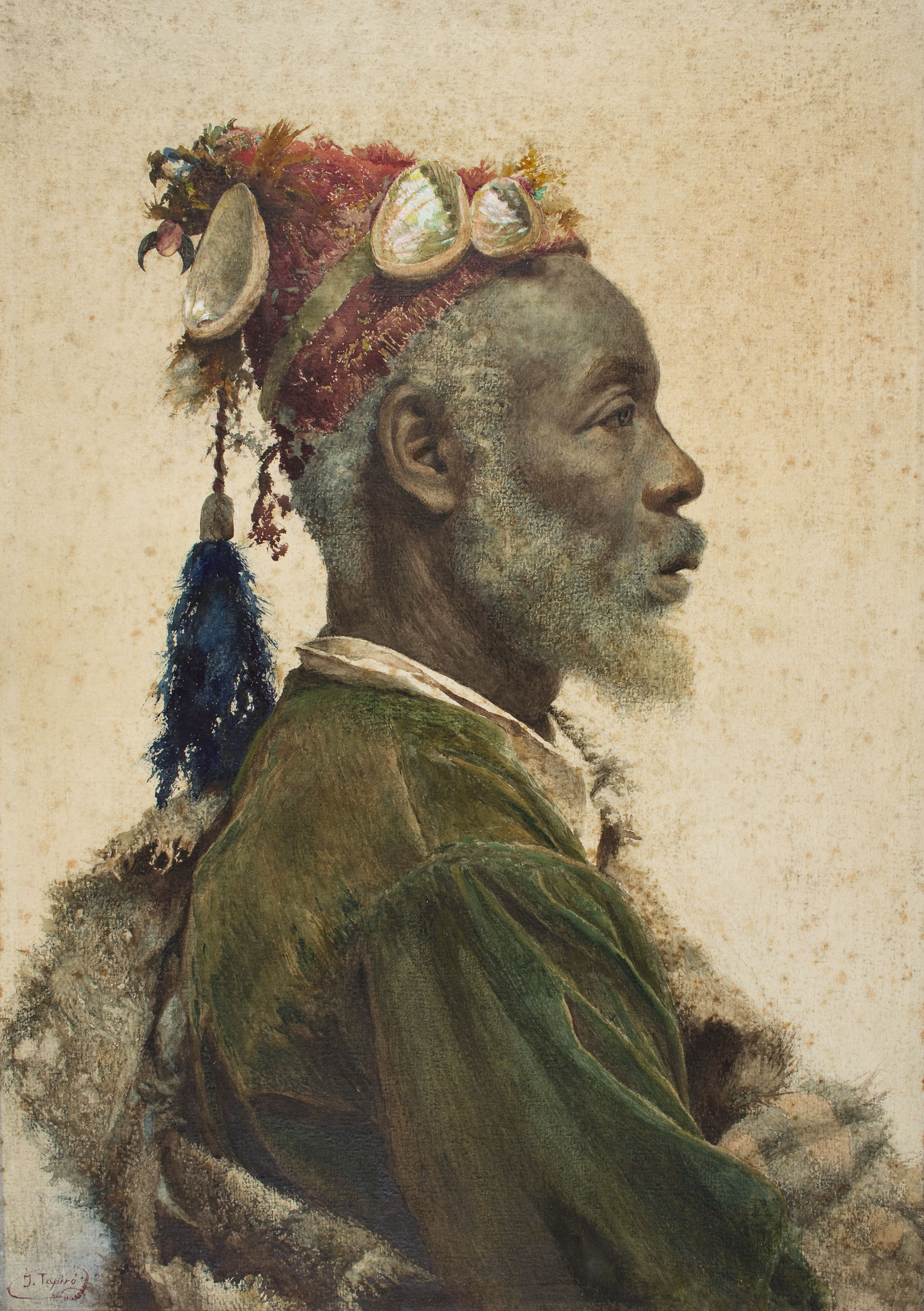The ‘Orient’ is present in the bourgeois art and culture of the second half of the 19th century for two reasons. First, its discovery coincided with the imperialist campaigns of the European powers, who violently reduced the countries of north Africa to the level of colonies; secondly, for the European imaginary, a fantastic ‘Orient’ that was very different from the real thing became the place where passion, now lost in the vulgarisation of the metropolis, was still possible. Orientalism, in short, filled with consoling dreams, became one of the most commercial subjects of the new art markets.
I. The Rise of the Modern Artist
- I.9. Orientalism
I.1. Studio, character and work [1]
I.2. Portraits and self-portraits [2]
I.3. The artist’s apprenticeship. The academy [3]
I.4. Realisms: model and nude [4]
I.5. The artist in his studio [5]
I.7. The bourgeois portrait [7]
I.8. The enthusiast in the studio [8]
I.9. Orientalism
I.10. Japonism and other exoticisms [9]
I.11. Historical painting versus current affairs [10]




